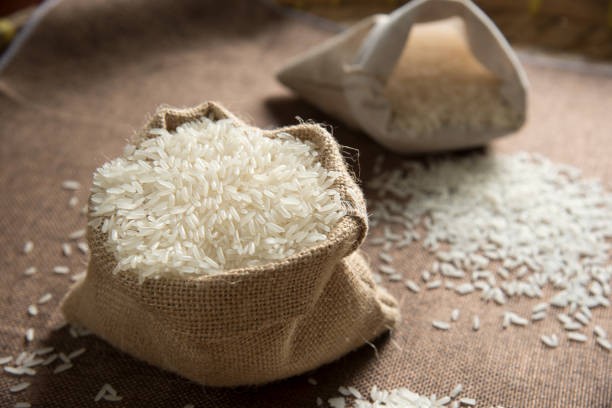Tags
Morocco Imports Rice to Offset Severe Drop in Production Amid Drought.
Morocco’s rice production has fallen drastically due to climate change, dropping from 55,000 tons in 2023 to just 7,000 tons this year.
Firdaous Naim.

Morocco has started importing rice to address the drastic shortfall in domestic production mainly caused by drought.
The first shipments are expected to arrive this month as the country turns to global suppliers to stabilize local market prices.
In response to fluctuating food prices, the Ministry of Industry and Trade authorized the import of 55,000 tons of rice, suspending customs duties and value-added tax on these imports.
This temporary measure, effective from January 1, strives to stabilize the local market and protect citizens’ purchasing power. However, while it addresses the immediate supply shortage, it offers only a short-term solution and does not provide a sustainable fix for the rice industry.
Drought hits domestic production
Morocco’s rice production fell drastically due to the ongoing drought, dropping from 55,000 tons in 2023 to just 7,000 tons this year. This sharp decrease contrasts with the average of 74,000 tons recorded in 2021 and 2022.
The Loukkos and Gharb regions, traditionally the country’s primary rice producers, have seen cultivated areas shrink to less than 900 hectares. Gharb, once a major contributor, has reported no output this year.
A recent UN Convention to Combat Desertification (UNCCD) report warns, “Morocco, one of North Africa’s most drought-prone nations, faces a severe crisis that threatens its agriculture and food security.”
The report attributes this situation to a six-year drought exacerbated by climate change, which has devastated cereal farmers whose wheat, maize, and barley fields once supported human and livestock consumption.
The drought, it adds, has “transformed the country’s agricultural landscape,” creating widespread economic and social challenges.
This crisis has also forced Morocco to rely heavily on wheat imports. Between January and June 2023, the country imported nearly 2.5 million tons of wheat, mainly from France.
The Food and Agriculture Organization (FAO) ranked Morocco as the sixth-largest wheat importer in the world in 2023, reflecting its growing reliance on external sources for staple foods.
Seeking global suppliers
Mohamed Larbi Ghazouani, head of MUNDIRIZ, a local rice company and president of the National Interprofessional Federation of Rice, shared details about the efforts to secure rice supplies with SNRT.
He confirmed that advanced negotiations with suppliers in India, Thailand, Brazil, and Argentina are underway. Brazil, in particular, stands out for its high-quality rice, while Indian producers are known for meeting international standards.
“We are looking for rice of good quality at a reasonable price to support the local market,” Ghazouani explained.
He also noted that the quality of rice depends on the percentage of broken grains, which should not exceed 5%. Imported rice will undergo processing in Moroccan factories before distribution.
The global rise in rice prices adds another challenge. Raw rice now costs approximately MAD 4,900 per ton ( $475), while white rice, which undergoes cleaning and processing, is priced at MAD 5,400 per ton ( $525). Final retail prices will depend on additional expenses, including transportation and processing.
No exit?
Six companies are active in Morocco’s rice sector, collectively generating annual revenue of MAD 600 million ($57 million). A government-backed program, running from 2021 to 2030, also aims to revitalize the industry with a budget of MAD 339 million ($32.5 million).
The rice federation also committed MAD 168 million ($16 million) in investments, while the government will contribute MAD 171 million ($16.2 million) to infrastructure development.
“We used to cover 70% of domestic demand with an annual production of 74,000 tons from 8,500 hectares,” Ghazouani said. “Fifteen years ago, yields averaged 5 tons per hectare. Today, this has improved to 8.4 tons per hectare, but drought has made it impossible to sustain production levels.”
The government’s recent decision allows producers to import rice until the end of December 2025. A committee will oversee the process, allocating quotas to companies based on their import history over the past three years.
For now, Morocco is pinning its hopes on these imports to prevent further disruptions in the local market and ensure affordable access to this staple food, especially as inflation drives up prices for many basic goods.
https://www.moroccoworldnews.com/2025/01/367466/morocco-imports-rice-to-offset-severe-drop-in-production-amid-droughtPublished Date: January 7, 2025






